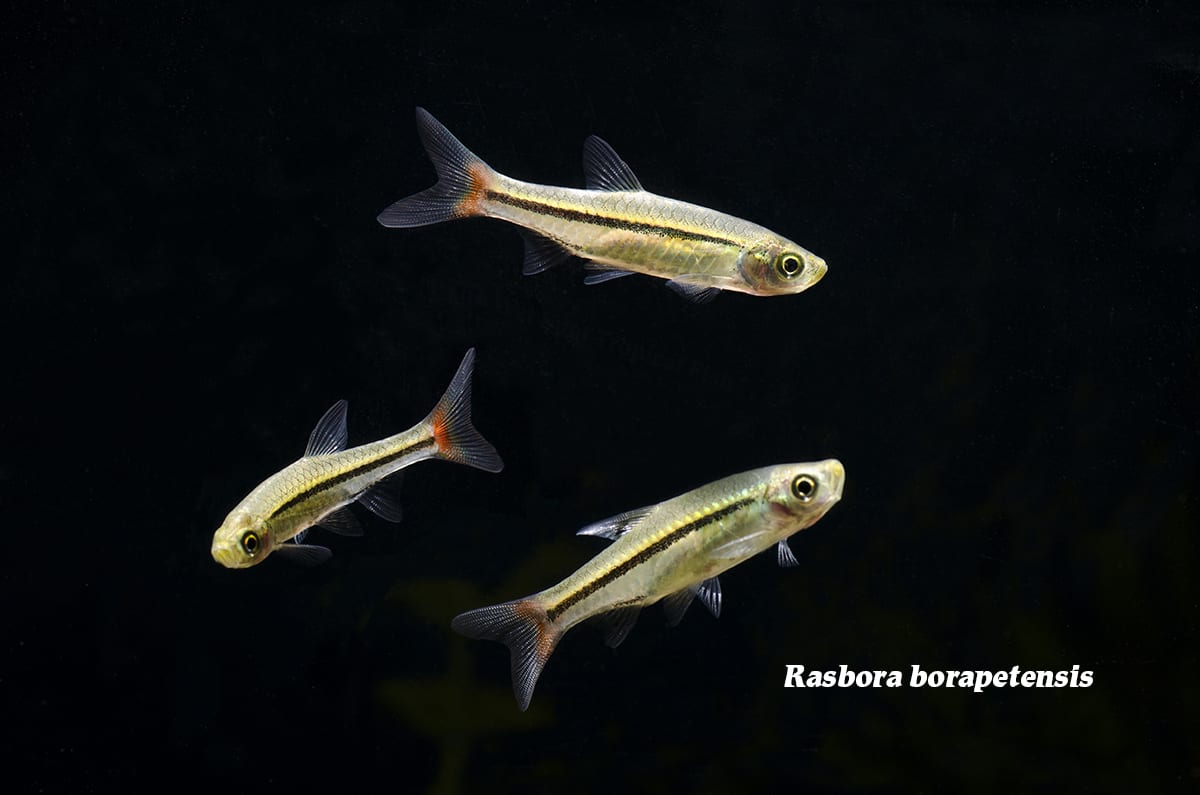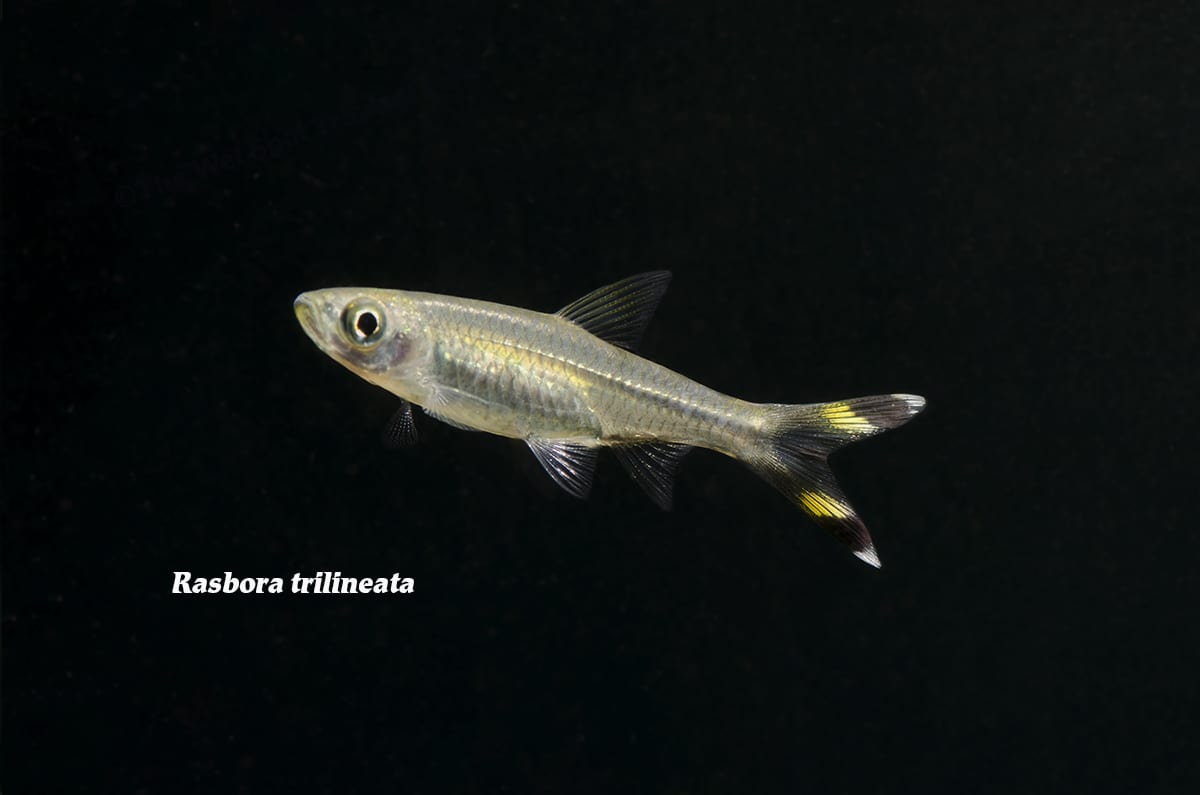King Mekong
King Mekong
Bordering 6 major countries in Southeast Asia is the River Mekong. Stretching 4,350 km, it is ranked 12th largest river in the world, and the 7th largest in Asia. With such an unassuming ranking, you might be surprised to hear this river is regarded as one of the richest areas of biodiversity in the world, second only to the Amazon. Boasting a known 850 freshwater fish species, more are being discovered on a regular basis, with 27 added to the list in just 2009. With extreme seasonal variations in flow and many treacherous rapids and waterfalls, the potential for undisturbed tropical habitats is unparallelled. During the wet season, the Mekong floods forests and grasslands. With those waters come some of our favorite aquarium fish including Trichopodus trichopterus, Rasbora borapetensis, and Rasbora trilineata.
Scientific NameTrichopodus trichopterus
Common NameThree Spot Gourami
Temperature / pH75 to 86°F / 5.5 to 8.5 pH
Native LocationMekong River
Preferred DietOmnivorous
Hardy and capable of thriving in numerous conditions, T. trichopterus is most commonly found in densely vegetated lowland habitats, migrating into flooded regions and returning to the main Mekong River channel when the waters recede. More commonly known as the “Three Spot Gourami” this species is quite popular in the hobby for their beautiful color variations, which have been selectively bred for. Ours are the blue variant, which have gorgeous shimmering blue scales with three dark spots along their flanks, and spotted fins. Reaching about 5 inches in length, most individuals are peaceful and appropriate for community tanks. Some males, however, can be aggressive as they mature, especially when breeding. They are best kept alongside robust species like Barbs, large Characins, Loricariids, Loaches, and other similarly-sized Gouramis. Generalist omnivores by nature, they thrive on diets composed of aquatic and terrestrial plants, invertebrates, zooplankton, algae, and detritus. In captivity, they will accept most offerings, but should be offered variety with a live and frozen component. Tanks should be planted with floating plant cover and some open swimming space. Optimal water conditions include temperatures between 75 and 86°F, pH of 5.5 to 8.5, and hardness of 21 to 249 ppm.
Scientific NameRasbora borapetensis
Common NameRed Tail Rasbora
Temperature / pH72 to 78°F / 6.0 to 7.5 pH
Native LocationMekong River
Preferred DietSmall invertebrates
Found in shallow marginal-waters of the Mekong including ponds, swamps, ditches, reservoirs, and canals is the brilliant R. borapetensis. Known as the “Red Tail Rasbora”, these schooling fish reach about 2 inches in length, have a golden horizontal stripe leading to bright red caudal fins. Popular for the hardiness to environmental conditions, these Rasboras are even found thriving in polluted waters. Tanks should be equipped with dark substrate, plentiful vegetation including floating plants, driftwood branches, logs, and tangles, and low lighting. This species is a prime candidate for community tanks, and thrives when kept alongside other Southeast Asian species, and should always be kept in groups of at least 8 conspecifics. Stomach contents of wild specimens indicate this species is a micropredator feeding on small crustaceans, insects, and worms. In captivity they can be fed small bites of dried foods, with daily live and frozen meals. Waters should be maintained with temperatures of 72 to 78°F, with pH between 6.0 and 7.5, and hardness of 14 to 85 ppm.
Scientific NameRasbora trilineata
Common NameScissortail Rasbora
Temperature / pH73 to 77°F / 6.0 to 7.5 pH
Native LocationMekong River
Preferred DietSmall invertebrates
Another Mekong Rasbora, R. trilineata, is found in vast habitat ranges from fast-flowing hill-streams to blackwater peat swamps. Thus, tank set-ups are largely unimportant so long as there is lots swimming space. In captivity they seem to do well with gravel substrate, some vegetation, and can be furnished with driftwood. Reaching up to 6 inches in length, these Rasboras are silver with a thin dark horizontal stripe leading to a forked caudal fin with black and white banding. Feeding on both aquatic and terrestrial invertebrates in the wild, they can be fed high quality dried foods with daily live or frozen meals like Daphnia and Artemia. Ideal for well-furnished community tanks, this peaceful species should be kept in groups of 6 or more conspecifics, and can be housed alongside any other Southeastern fish that wouldn’t want to make a meal out of them. Tanks waters should be maintained with temperatures between 73 and 77°F, pH of 6.0 to 7.5, and hardness between 14 and 85 ppm.
Looking to spruce up a well-developed community tank, or to start your own Southeast Asian community? Look no farther than the Mekong, which may in fact be very far…so, best to let the Wet Spot be your link to this uniquely diverse freshwater habitat.


